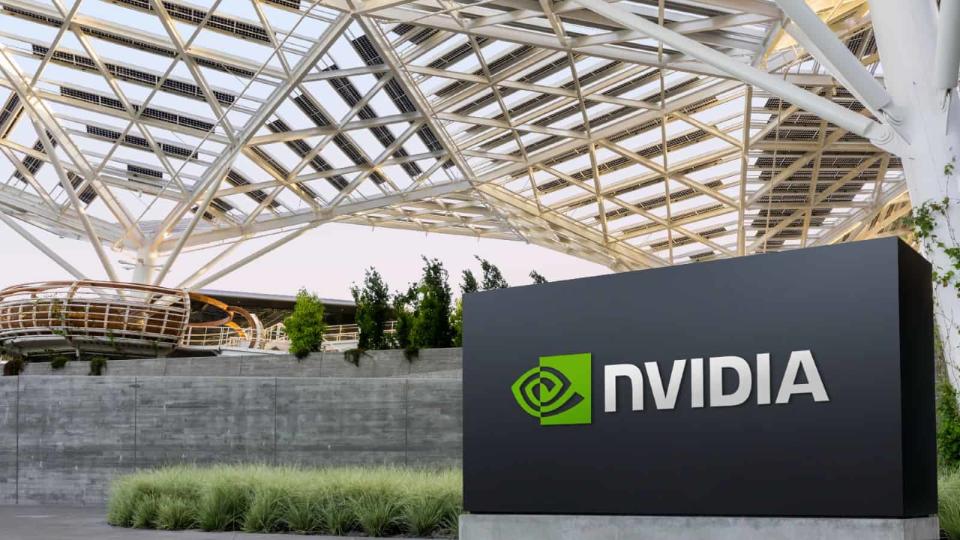1 fundamental reason Nvidia stock may continue to rise

Nvidia (NASDAQ:NVDA) stock’s surged on demand for its graphics processing units (GPUs) which are central to the artificial intelligence (AI) revolution.
These GPUs, once designed for graphics rendering in video games, have evolved to become essential components in AI applications.
The architecture that excels in rendering detailed graphics also proves highly effective in handling the massive parallel processing requirements of AI and machine learning.
Does 70.3 times earnings scare you?
Investors can easily be scared away by certain data points and metrics. But it’s important to see the wider picture.
Most investors know how to use the price-to-earnings (P/E) ratio, but it’s not enough to form a Buy or Sell position on its own.
It can also be a little misleading and, quite frankly, a trailing P/E — the share price divided by earnings per share (EPS) over the past 12 months (TTM) — isn’t always that useful because we need to look forwards.
Nvidia’s currently trading at 70.3 times earnings for the last 12 months. That’s obviously rather expensive, and it will likely appear even more expensive to UK-focused investors — the average FTSE 100 P/E is around 13 times.
Looking forward, Nvidia’s trading at 46.7 times projected earnings for 2024. These are analysts’ projections and not the company’s own forecasts.
In 2025, this figure falls to 35.5 times, and then 30.5 times in 2026. This trajectory’s certainly eye-catching.
One good reason
This brings me to my one good reason that Nvidia stock might continue higher. As investors, we should seek companies that are undervalued, according to their growth potential or their total returns, taking into account dividends.
Analysts believe that Nvidia will grow earnings by a staggering 31.7% annually over the three-to-five years.
And this leads to a price-to-earnings-to-growth (PEG) ratio of 1.47. Traditionally, a ratio above one suggested a firm was overvalued, but that’s not the case these days. One reason is that the PEG ratio doesn’t take into account long-term growth.
It’s also worth noting that, according to the PEG ratio, Nvidia’s among the cheapest of the Magnificent Seven stocks — these are the seven tech stocks that vastly outperformed in 2023.
Only Alphabet and Meta are cheaper, according to the PEG ratio — both at 1.35. Amazon (1.8), Apple (2.9), Microsoft (2.8) and Tesla (6.4) are vastly more expensive.
In short, and based on projected growth versus the current valuation, Nvidia stock could go a lot higher.
Of course, the risk is that these projected earnings forecasts can be wrong. Some analysts expect Nvidia to lose its commanding position in the data centre/AI segment in the coming years.
Personally, I’m not sure about those dissenting voices. Nvidia’s cash flows are staggering, and its innovating at an impressive rate.
The bottom line on Nvidia stock
I invest for the long run, and while I’m up over 150% on Nvidia, I’m looking five to 10 years down the line. Do I think Nvidia will be trading higher in a decade? I’d say so.
The post 1 fundamental reason Nvidia stock may continue to rise appeared first on The Motley Fool UK.
More reading
John Mackey, former CEO of Whole Foods Market, an Amazon subsidiary, is a member of The Motley Fool’s board of directors. Suzanne Frey, an executive at Alphabet, is a member of The Motley Fool’s board of directors. Randi Zuckerberg, a former director of market development and spokeswoman for Facebook and sister to Meta Platforms CEO Mark Zuckerberg, is a member of The Motley Fool's board of directors. James Fox has positions in Meta Platforms and Nvidia. The Motley Fool UK has recommended Alphabet, Amazon, Apple, Meta Platforms, Microsoft, Nvidia, and Tesla. Views expressed on the companies mentioned in this article are those of the writer and therefore may differ from the official recommendations we make in our subscription services such as Share Advisor, Hidden Winners and Pro. Here at The Motley Fool we believe that considering a diverse range of insights makes us better investors.
Motley Fool UK 2024

 Yahoo Finance
Yahoo Finance 